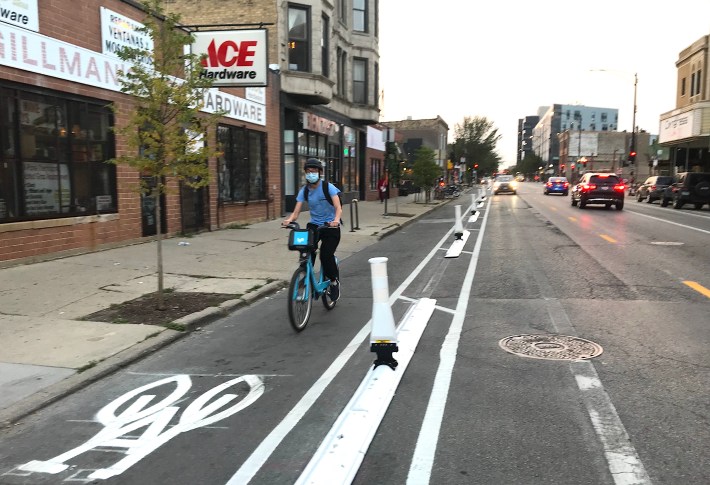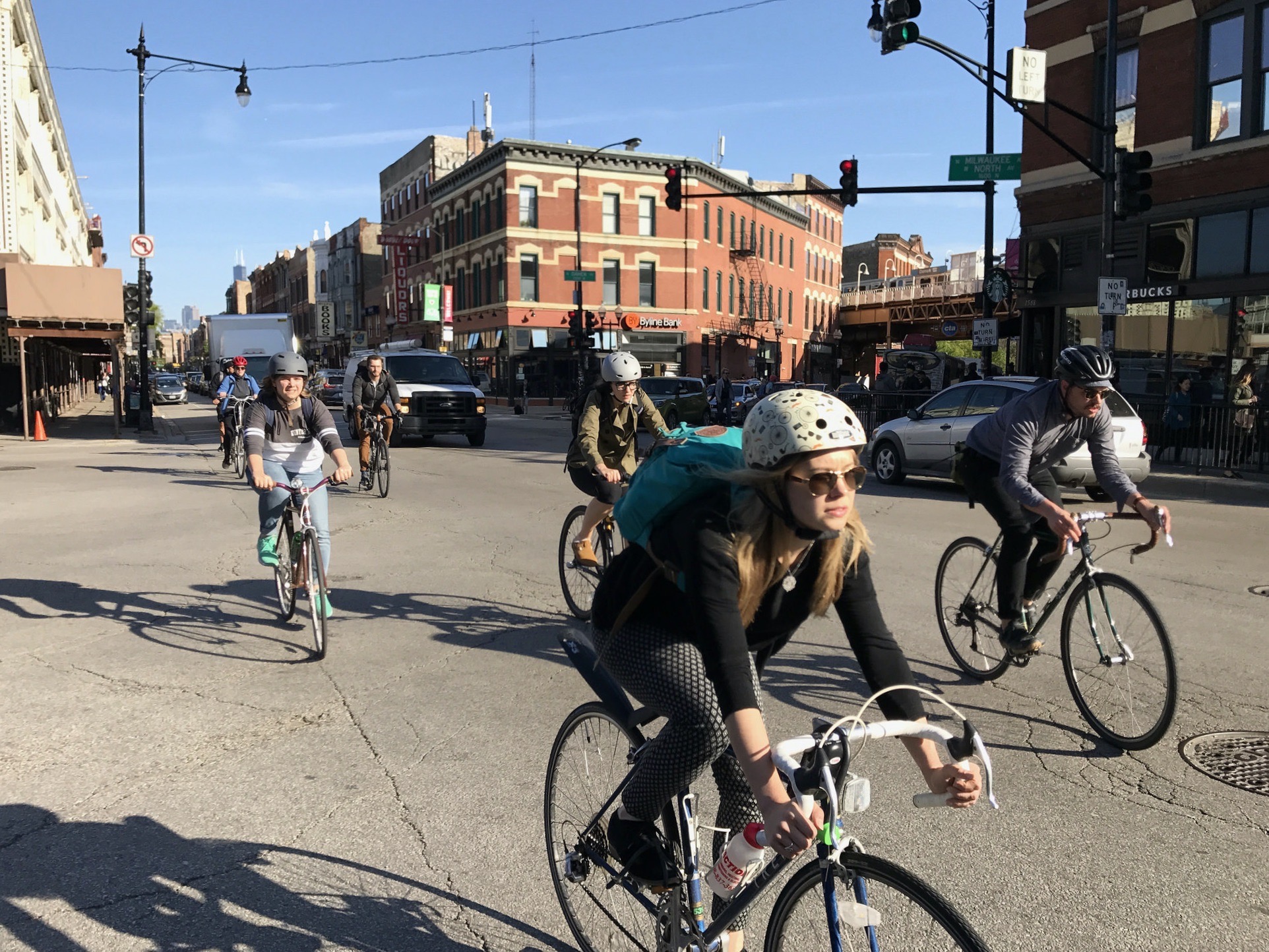A number of Chicago wards have held participatory budgeting elections, allowing residents to have a say in how to spend the district's annual $1.3 million in discretionary "menu" funds for infrastructure improvements. Nine wards are conducting PB elections this year according to PB Chicago, and organization that help facilitate the process.
The 1st Ward, a Near Northwest district represented by Alderman Daniel LaSpata, wrapped up its PB idea submission period yesterday. Residents were invited to submit proposals on an online portal run by the University of Illinois at Chicago.
Given LaSpata’s passion for improving active transportation with the support of his constituents, it’s unsurprising many of the 1st Ward 50 PB proposals involve walking or biking infrastructure. Here are some of the ideas.
- Traffic mirrors at the entrance/exit of The 606 trail
- Highway underpass beautification
- Pedestrian improvements to Augusta Boulevard such as sidewalk bump-outs, more stop signs, pedestrian islands and/or speed humps.
- A cyclist counter on Milwaukee Avenue
- An Open Street events on Milwaukee (Sadly, menu funds can only be used for infrastructure, not events)
- Bike lanes on Fullerton Avenue
- A shared bus and bike lane on Chicago Avenue
- Wood Street protected bike lane
- Ohio Street Greenway
- A bike-friendly connection from Dean St. to Paulina St.
- Protected bike lanes on the Diversey bridge
- Removing parking from one side of Milwaukee Avenue in Wicker Park to make room for protected bike lanes
That last proposal is particularly intriguing. As we discussed last week, back in 2017, after an epidemic of dooring crashes on Milwaukee, the Wicker Park Bucktown Chamber of Commerce proposed adding bike lanes on the street, and the Active Transportation Alliance rallied support for protected lanes. But there was some pushback from residents and merchants against parking removals, and the city's parking contract would have complicated matters. Ultimately the Chicago Department of Transportation installed dashed bike lanes on the corridor instead.
However, last year LaSpata oversaw the installation of protected bike lanes on Milwaukee between Western and California avenues in Logan Square, which involved stripping parking from one side of the street. There is relatively low parking demand on that stretch of Milwaukee – prior to the parking removal, CDOT counts showed that on average only 46 percents of the spots on this stretch of Milwaukee were occupied on weekdays. Still there were some complaints from merchants, who argued that the loss of on-street parking would hurt their sales. But the bike lanes remained in place and the issue seems to have largely subsided.

ATA spokesperson Kyle Whitehead said last week that it's time to revisit the idea of stripping parking on Milwaukee in Wicker Park to make space for protected lanes. "Parking remains a major obstacle to building more protected bike lanes in Wicker Park and neighborhoods across the city. It’s been shown in Chicago and cities around the world that there’s significant public benefit to repurposing parking to better protect people walking and biking. But too often these benefits are overlooked or never fully considered in planning processes that lack transparency and are dominated by a few vocal opposition stakeholders."
Asked how protected bike lanes could be implemented on Milwaukee in a way that would be acceptable to both the parking meter concessionaire and business owners, Whitehead responded, "To determine the best use of limited public right of way, we need transparent, community-driven planning processes that fully evaluate the costs and benefits of different design options. The parking concessionaire and pro-parking businesses are just two of many stakeholders that should have a say in determining how we invest public funds and determine the best use of the public right of way. For example, in Wicker Park alone, there are several businesses and many more residents that support removing parking to better protect people biking and walking, and ultimately help encourage more people to use more sustainable transportation options."
According to a Block Club Chicago article by Quinn Myers, during the month of September, residents will need to develop the ideas into a formal proposal. As formal proposals are created, they will be assessed by the appropriate city department for feasibility.
Come October, residents will be able to vote on projects that were deemed feasible. The proposals with the most votes will be funded, depending on the cost and complexity.




